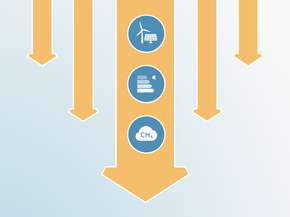Country summary
Overview
With the adoption of India’s final National Electricity Plan (NEP) (released in April 2018) the country remains on track to overachieving its “2˚C-compatible” rated Paris Agreement NDC climate action targets. On present estimates, India could achieve part of its NDC goals—a 40% non-fossil-based power capacity by 2030—as early as the end of this year, 2018, a full 12 years earlier than targeted.
India could become a global climate leader with “1.5˚C-compatible” rating if it continues to abandon plans to build new coal-fired power plants. This is more than feasible—the Draft National Electricity Plan contained no expansion of coal power—and such a scenario is supported by recent developments such as the 50% decrease in the cost of solar power in just two years. In 2017, renewable energy investment topped that fossil fuel-related power investments. If the price of solar PV continues to fall, it stands to become the preferred choice for distribution companies. Planned coal-fired capacity could risk becoming stranded assets.
The government’s aims regarding electric vehicles are unclear, resulting in a sporadic uptake of EV technology across states. It could improve this by mandating action plans at a national level and working towards its earlier aim of all new vehicles being electric by 2030.
On the other hand, the Indian government is optimistic that through the Perform, Achieve and Trade (PAT) scheme, the industry sector will continue to make a substantial contribution to the country’s climate targets. The Ministry of Power and the Bureau of Energy Efficiency state that the first cycle of the PAT scheme resulted in savings of 5.6 GW and 31 MtCO2e between 2012 and 2015 (BEE, 2018).
The ramp-up of renewables in India can provide access to affordable power at scale, and quickly. A report by the national coal mining company confirms declining future costs of solar and renewable electricity storage (Coal India, 2018), which is likely to foster low-carbon investments. In fact, investment in renewable power in India topped fossil fuels for the first time in 2017, according to the International Energy Agency (IEA). The government recently increased its previous 2022 capacity target for renewables from 175GW to 227.6 GW.
Nonetheless, there is still substantial uncertainty in India about coal power capacity and whether all renewables projects in the pipeline will be completed on time and integrated into the grid. In 2017, coal consumption increased by 4.8% or 27 MtCO2e and the new NEP forecasts coal capacity additions (The Economist, 2018). Unlike the Draft Electricity Plan, which projected that no new coal capacity is needed after 2022, the NEP indicates that while 48.3 GW of end-of-life plants are expected to close by 2022, another 94.3 GW will be added by 2027. There is a risk, however, of at least some of this capacity becoming stranded assets.
Our analysis shows that India can achieve its NDC target with currently implemented policies. We project the share of non-fossil power generation capacity will reach 60–65% in 2030, corresponding to a 45–50% share of electricity generation. India’s emissions intensity in 2030 will be ~50% below 2005 levels. Thus, under current policies, India is likely to achieve both its 40% non-fossil target and its emissions intensity target.
Further analysis
Latest publications
Stay informed
Subscribe to our newsletter




